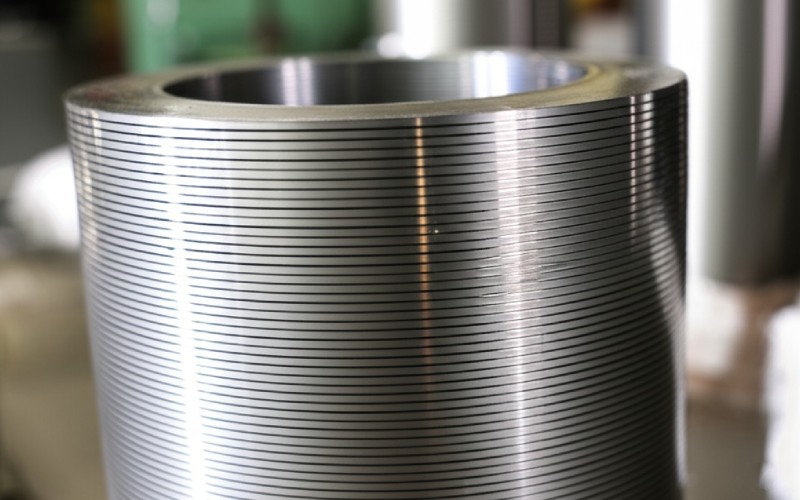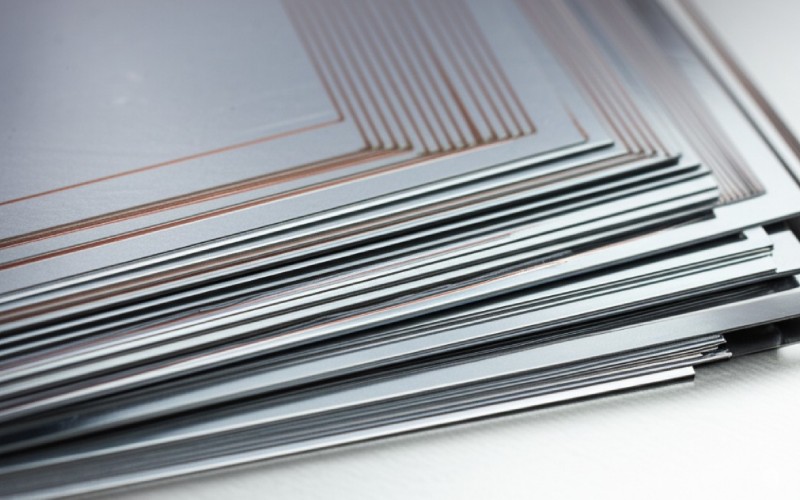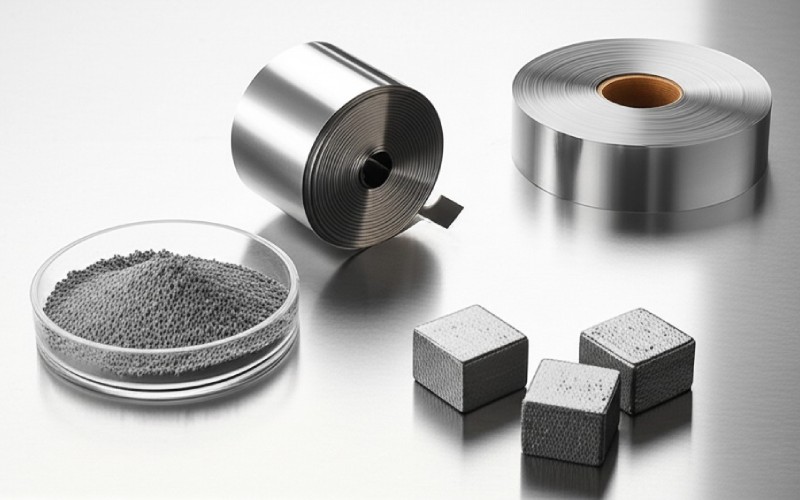Let Sino's Lamination Stacks Empower Your Project!
To speed up your project, you can label Lamination Stacks with details such as tolerance, material, surface finish, whether or not oxidized insulation is required, quantity, and more.

You see, the core of any type of excellent electric motor is made from thin sheets, called motor laminations. Selecting the right lamination material for your motor isn’t just a little detail; it directly influences your motor’s performance and efficiency. If you have ever wondered what goes into making an excellent motor, or you’re trying to choose the most effective materials for your motor design, this article is for you. We’ll look at the various types of motor lamination materials, from trusty silicon steel to advanced amorphous alloys. This article will help you understand these motor lamination choices for your next motor project. This guide on sorts of motor lamination products will certainly clarify numerous aspects of electric motor laminations.
Picture stacking extremely thin slices of special metal together. These pieces, or laminations, form the core of the motor — both the fixed component (stator lamination) and the turning component (rotor lamination). Each motor lamination is insulated from the next. This is a very crucial design choice for any kind of motor. These motor lamination stacks are essential to how a motor works.
Why go to all this trouble with thin, insulated motor lamination stacks? It’s all about battling power losses. When an electromagnetic field in a motor changes rapidly, it can create undesirable electric currents in the core material. These are called eddy current losses, and they simply turn into heat, making the motor less efficient. By using thin laminations, we make it much harder for these currents to flow, which helps to reduce eddy current losses. This means a more efficient motor, and that’s what we all want, right? The choice of lamination materials plays a critical role here. The magnetic properties of the material used for the motor lamination directly impact the motor’s overall efficiency.

If you ask anyone in the motor industry, they’ll tell you silicon steel is a big deal for motor laminations. Silicon steel is basically an iron alloy with a small percentage of silicon added. This isn’t just any alloy; it’s a soft magnetic material, excellent for a motor. It is one of the most commonly used materials for this purpose.
The main reason silicon steel is so widely used in motor laminations is its great magnetic properties and relatively low cost. The silicon in the alloy increases the electrical resistivity of the material. This is great because it helps to reduce eddy current losses in the motor lamination, making the motor run cooler and improving motor efficiency. For many general-purpose motor applications, silicon steel offers a great balance of performance and cost for the motor lamination material. It’s a real workhorse in the world of electric motor laminations, and these alloys are typically used across many types of motor.
The silicon content in silicon steel is a careful balancing act. Adding silicon to the iron alloy increases its electrical resistivity. This is great because it reduces those troublesome eddy current losses. A motor with lower losses is a more efficient motor. The amount of silicon has a huge effect on the motor lamination material’s behavior.
However, adding too much silicon can make the silicon steel more brittle. This can make it harder to stamp or cut the thin motor laminations required for the motor core. Proper material processing is also a factor here. Typically, silicon steel made for motor lamination may have silicon content ranging from a little up to about 3.5%. Higher silicon content generally means better magnetic properties for the motor, like lower core losses, but it comes at the cost of that reduced workability and potentially higher material cost. So, engineers need to choose the right grade of silicon steel based on the motor’s requirements and the manufacturing process for the lamination.
Yes, certainly! Not all silicon steel is created equal, especially when we’re talking about motor lamination stacks. There’s non-oriented silicon steel and grain-oriented silicon steel. For most motor applications, particularly those where the magnetic flux doesn’t have a single preferred direction, non-oriented silicon steel is often used. It has fairly consistent magnetic properties in all directions in the plane of the lamination. This type of electrical steel is vital for many motor designs.
Grain-oriented silicon steel, on the other hand, is processed to have very strong magnetic properties in one particular direction. This makes it great for transformer cores where the magnetic flux path is well-defined. While it’s generally used in a transformer, you might see it in some special motor designs. Choosing between these types for your motor lamination truly depends on how the magnetic field will behave in your motor. The goal is always to get the best magnetic performance for the motor from the chosen silicon steel. This transformer steel variant has specific uses. The selection of different types of motor lamination is essential.
Now, let’s talk about something a little more advanced for motor lamination: amorphous alloys. Amorphous alloys, often called metallic glasses, have a very different structure compared to silicon steel. Instead of a regular, crystalline structure, their atoms are arranged randomly, like in glass. This unique structure gives them some remarkable soft magnetic properties, leading to very low core losses and high efficiency in a motor.
The big advantage of amorphous alloys for a motor lamination is their exceptionally low core losses, particularly at higher frequencies. This is because their high electrical resistivity and unique structure help to significantly reduce eddy current losses. If you’re designing a high-efficiency motor, especially one that operates at high speeds, amorphous alloys can be a game-changer. Compared to silicon steel, amorphous materials can significantly boost motor efficiency. This means less wasted energy and a cooler running motor. These alloys offer a real step-up in efficiency for the motor, making a motor with an amorphous core very attractive.
Making a motor core with amorphous alloy laminations is a bit different than with silicon steel. The amorphous motor core process has its own set of challenges and techniques. Since amorphous alloys are very thin and can be brittle, handling them requires care. They typically come as thin ribbons. These amorphous alloy materials require different manufacturing steps.
These ribbons are then wound or stacked together to form the motor core. Sometimes, they require special heat treatments, called annealing, after forming to get the best magnetic properties. The manufacturing process can be more intricate compared to silicon steel laminations for a motor. However, for applications where top motor efficiency is absolutely key, the benefits of amorphous alloys in a motor, like reduced power losses, can outweigh the manufacturing intricacies. It’s a trade-off, like many things in motor lamination engineering. This process affects the final motor characteristics.
Nickel-iron alloys are another interesting group of materials for motor laminations. These alloys, sometimes called Permalloys, are used in applications where high magnetic permeability is critical, particularly at low electromagnetic field strengths. They are a type of soft magnetic material. The nickel content can vary, and this changes the alloy’s properties. This alloy is a specialized option for motor laminations.
These alloys offer excellent magnetic properties. They can achieve high permeability at low to moderate inductions. This makes them suitable for applications like sensitive sensors, some types of transformers, and specialized motor designs where precise control of the magnetic flux is required. However, nickel-iron alloys are generally more expensive than silicon steel. So, you’ll typically find them in high-performance motors or specific parts of a motor where their unique magnetic qualities, like high permeability, truly shine. Using this alloy for a motor lamination can significantly enhance performance in those niche motors. The nickel content is crucial to their performance.
When you need the absolute highest magnetic saturation, cobalt-iron alloys typically come into the picture for motor lamination material. These alloys, which combine cobalt and iron, can achieve a much higher saturation flux density than silicon steel and even nickel-iron alloys. This makes them one of the most expensive materials for motor cores.
This high magnetic saturation means the material can carry much more magnetic flux before it “maxes out.” This is very important for making a motor smaller and lighter while still delivering high power or torque. Cobalt alloys are definitely a costly motor lamination material. They are more expensive and can sometimes be more challenging to work with. However, for high-performance motors where every bit of power density matters, the benefits of a cobalt alloy in the motor lamination stacks can be worth the investment. They certainly represent a top-tier choice for certain motor designs, especially when high saturation is required. The cobalt content is essential here.
Beyond the heavyweights like silicon steel and amorphous alloys, there are other soft magnetic materials that find their way into motor core lamination. Often, for very specific requirements, designers consider materials like soft magnetic composites (SMCs). These are iron powder particles coated with an insulating layer, then pressed into intricate shapes. This is quite different from typical lamination stacks. These composite materials offer unique benefits for a motor.
SMCs can be great for electric motors with complex 3D magnetic flux paths, like some axial flux motors. They offer low eddy current losses, particularly at high frequencies, because the iron particles are insulated from each other. While their magnetic permeability may not be as high as laminated silicon steel, the ability to form complex shapes can be a big advantage for certain motor designs. The material choice here truly depends on the unique needs of the motor and its lamination. These magnetic materials for specific motor lamination needs keep evolving, and other materials include specialized powdered iron alloy options.

The fact is, material selection for your motor’s stator and rotor lamination depends on several things. There’s no single “best” material for every motor. You need to think about the motor’s operating speed, the required motor efficiency, the working temperature, and, of course, the cost. The choice of motor lamination material has a big impact on the final motor.
For general-purpose motors, non-oriented silicon steel is often used because of its balance of performance and cost. If you need really high motor efficiency, especially at high frequencies, then amorphous alloys or even some specialized silicon steel grades may be better, despite higher costs. For motors that require high magnetic flux density to be compact and powerful, cobalt alloys might be considered. The key is to understand the trade-offs between magnetic properties, mechanical strength, ease of manufacturing the lamination, and the overall cost for your specific motor application. Careful material selection for the motor lamination is essential for a successful motor design, considering all magnetic and electrical properties, including electrical conductivity. This selection will define the efficiency and performance of the motor.